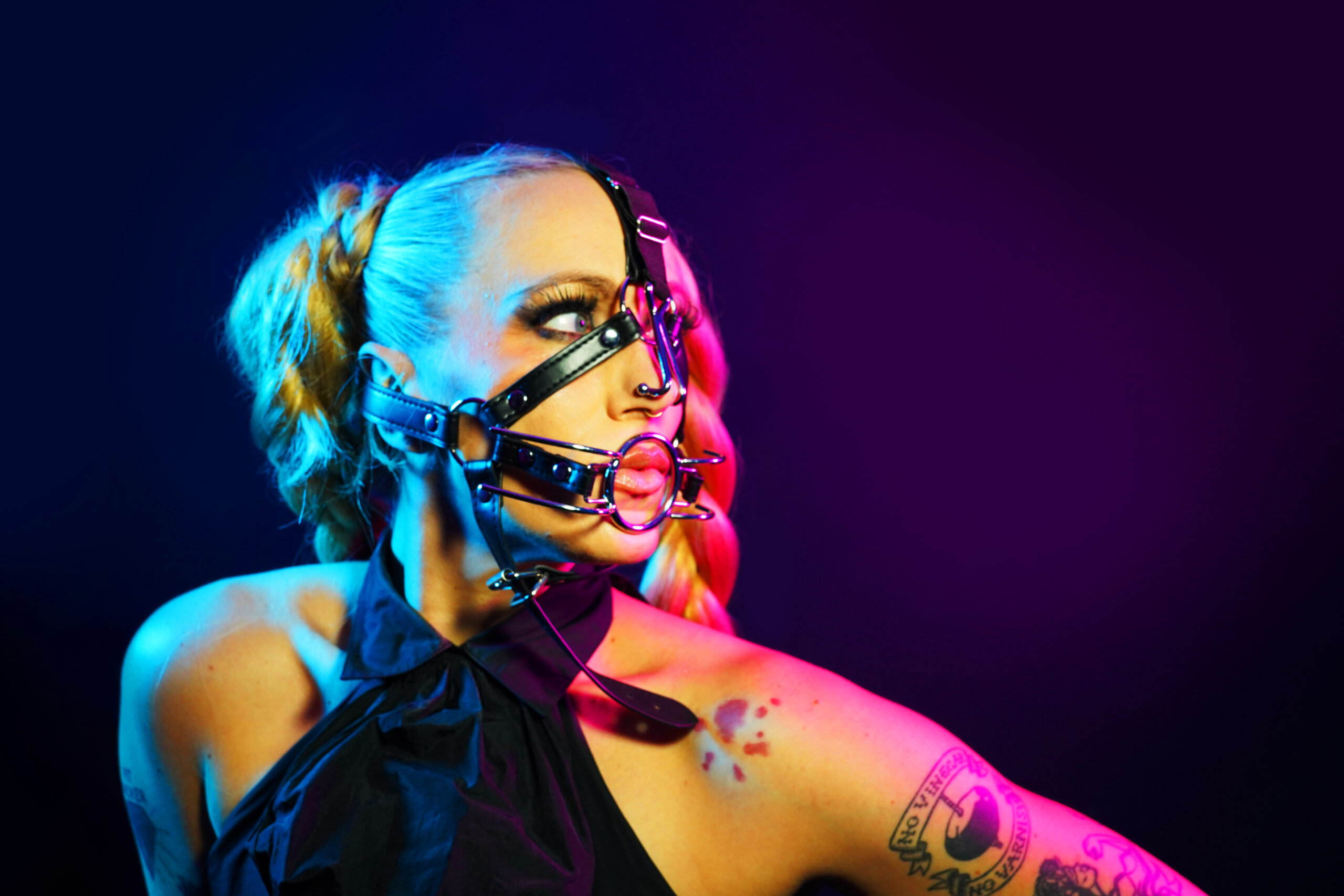Pansexual Attraction
Pansexuality is an orientation that encompasses attraction to people regardless of their gender identity or expression. It challenges traditional binary notions of gender, recognizing that individuals exist on a spectrum and that attraction can extend beyond male-female categories.
Defining Pansexuality
Pansexuality is an orientation that encompasses attraction to people regardless of their gender identity or expression. It challenges traditional binary notions of gender, recognizing that individuals exist on a spectrum and that attraction can extend beyond male-female categories.
Understanding pansexuality involves recognizing that:
- Pansexual individuals are attracted to people based on their personality, character, and connection, rather than solely focusing on gender.
- Gender identity is distinct from sexual orientation. A person’s internal sense of their own gender may or may not align with the gender they were assigned at birth.
- Pansexuality is a valid and respected sexual orientation.
Beyond the Binary: Recognizing Gender Fluidity
Understanding pansexuality involves recognizing that:
- Pansexual individuals are attracted to people based on their personality, character, and connection, rather than solely focusing on gender.
- Gender identity is distinct from sexual orientation. A person’s internal sense of their own gender may or may not align with the gender they were assigned at birth.
- Pansexuality is a valid and respected sexual orientation.
It’s crucial to acknowledge the fluidity of gender expression. Some individuals identify as transgender, non-binary, agender, or other gender identities that fall outside the traditional male-female binary. Pansexual individuals are open to forming connections with people of all genders, embracing this diversity and recognizing the richness it brings.
By moving beyond rigid gender categories, pansexuality promotes inclusivity and acceptance. It emphasizes that attraction is a complex and multifaceted experience that can transcend societal norms and expectations.
Experiences and Expressions of Pansexuality
Pansexuality is an orientation that encompasses attraction to people regardless of their gender identity or expression. It challenges traditional binary notions of gender, recognizing that individuals exist on a spectrum and that attraction can extend beyond male-female categories.
Understanding pansexuality involves recognizing that:
- Pansexual individuals are attracted to people based on their personality, character, and connection, rather than solely focusing on gender.
- Gender identity is distinct from sexual orientation. A person’s internal sense of their own gender may or may not align with the gender they were assigned at birth.
- Pansexuality is a valid and respected sexual orientation.
It’s crucial to acknowledge the fluidity of gender expression. Some individuals identify as transgender, non-binary, agender, or other gender identities that fall outside the traditional male-female binary. Pansexual individuals are open to forming connections with people of all genders, embracing this diversity and recognizing the richness it brings.
By moving beyond rigid gender categories, pansexuality promotes inclusivity and acceptance. It emphasizes that attraction is a complex and multifaceted experience that can transcend societal norms and expectations.
Understanding the Spectrum
Pansexuality challenges conventional ideas about attraction by recognizing that individuals exist on a spectrum of gender identities and expressions. It acknowledges that attraction goes beyond traditional male-female categories, encompassing a wider range of possibilities.
A Matter of Attraction, Not Identity
Pansexuality is an orientation that encompasses attraction to people regardless of their gender identity or expression. It challenges traditional binary notions of gender, recognizing that individuals exist on a spectrum and that attraction can extend beyond male-female categories.
Understanding pansexuality involves recognizing that:
- Pansexual individuals are attracted to people based on their personality, character, and connection, rather than solely focusing on gender.
- Gender identity is distinct from sexual orientation. A person’s internal sense of their own gender may or may not align with the gender they were assigned at birth.
- Pansexuality is a valid and respected sexual orientation.
It’s crucial to acknowledge the fluidity of gender expression. Some individuals identify as transgender, non-binary, agender, or other gender identities that fall outside the traditional male-female binary. Pansexual individuals are open to forming connections with people of all genders, embracing this diversity and recognizing the richness it brings.
By moving beyond rigid gender categories, pansexuality promotes inclusivity and acceptance. It emphasizes that attraction is a complex and multifaceted experience that can transcend societal norms and expectations.
The Evolution of Terminology
Pansexuality challenges conventional ideas about attraction by recognizing that individuals exist on a spectrum of gender identities and expressions. It acknowledges that attraction goes beyond traditional male-female categories, encompassing a wider range of possibilities.
The evolution of terminology surrounding sexual orientations reflects changing societal understandings and evolving definitions. Historically, concepts like “homosexuality” and “heterosexuality” were the dominant terms, often reinforcing a binary view of sexuality. However, as awareness of diverse gender identities and expressions has increased, new terms have emerged to better encompass the complexities of human experience.
Pansexuality is one such term that has gained recognition in recent decades. It signifies a broader understanding of attraction, encompassing individuals who are attracted to people regardless of their gender identity or expression. This shift in terminology reflects a move away from rigid categories and towards a more inclusive and accepting approach to sexuality.
Social Perceptions and Challenges
Pansexuality challenges conventional ideas about attraction by recognizing that individuals exist on a spectrum of gender identities and expressions. It acknowledges that attraction goes beyond traditional male-female categories, encompassing a wider range of possibilities.
The evolution of terminology surrounding sexual orientations reflects changing societal understandings and evolving definitions. Historically, concepts like “homosexuality” and “heterosexuality” were the dominant terms, often reinforcing a binary view of sexuality. However, as awareness of diverse gender identities and expressions has increased, new terms have emerged to better encompass the complexities of human experience.
Pansexuality is one such term that has gained recognition in recent decades. It signifies a broader understanding of attraction, encompassing individuals who are attracted to people regardless of their gender identity or expression. This shift in terminology reflects a move away from rigid categories and towards a more inclusive and accepting approach to sexuality.
Stereotypes and Misconceptions
Social perceptions and challenges related to pansexuality stem from deeply ingrained societal norms and misconceptions about gender and sexuality.
Traditional views often confine individuals into rigid binary categories of male and female, associating attraction solely with these genders. Pansexuality challenges this binary framework, leading to confusion and discomfort among those unfamiliar with it.
Stereotypes surrounding pansexuality can be harmful and perpetuate misunderstandings.
Some common misconceptions include the belief that pansexual individuals are promiscuous or that they are simply experimenting with different genders.
These stereotypes not only dehumanize pansexual individuals but also contribute to prejudice and discrimination.
It’s crucial to educate oneself about pansexuality and challenge these harmful stereotypes.

Understanding that pansexuality is a valid and respected sexual orientation, just like any other, is essential for fostering inclusivity and acceptance.
Finding Community and Support
Social perceptions and challenges related to pansexuality stem from deeply ingrained societal norms and misconceptions about gender and sexuality.
Traditional views often confine individuals into rigid binary categories of male and female, associating attraction solely with these genders. Pansexuality challenges this binary framework, leading to confusion and discomfort among those unfamiliar with it.
Stereotypes surrounding pansexuality can be harmful and perpetuate misunderstandings.

Some common misconceptions include the belief that pansexual individuals are promiscuous or that they are simply experimenting with different genders.
These stereotypes not only dehumanize pansexual individuals but also contribute to prejudice and discrimination.
It’s crucial to educate oneself about pansexuality and challenge these harmful stereotypes.
Understanding that pansexuality is a valid and respected sexual orientation, just like any other, is essential for fostering inclusivity and acceptance.
Finding community and support for pansexual individuals can be vital for their well-being and sense of belonging.
- Online platforms and forums the art of fingering dedicated to LGBTQ+ communities provide spaces for pansexual individuals to connect with others who share similar experiences.
- Local LGBTQ+ organizations often offer support groups, social events, and resources specifically tailored for pansexual individuals.
- It can be beneficial to find friends and family members who are supportive and understanding of pansexuality.
Embracing Inclusivity
Embracing inclusivity means recognizing and respecting the diversity of human experiences, including the spectrum of sexual orientations. Pansexuality is a testament to this principle, challenging traditional notions of gender and celebrating attraction that transcends binary categories.
Celebrating Diversity in Attraction
Pansexuality challenges conventional ideas about attraction by recognizing that individuals exist on a spectrum of gender identities and expressions. It acknowledges that attraction goes beyond traditional male-female categories, encompassing a wider range of possibilities.
The evolution of terminology surrounding sexual orientations reflects changing societal understandings and evolving definitions. Historically, concepts like “homosexuality” and “heterosexuality” were the dominant terms, often reinforcing a binary view of sexuality. However, as awareness of diverse gender identities and expressions has increased, new terms have emerged to better encompass the complexities of human experience.
Pansexuality is one such term that has gained recognition in recent decades. It signifies a broader understanding of attraction, encompassing individuals who are attracted to people regardless of their gender identity or expression. This shift in terminology reflects a move away from rigid categories and towards a more inclusive and accepting approach to sexuality.
Social perceptions and challenges related to pansexuality stem from deeply ingrained societal norms and misconceptions about gender and sexuality.
Traditional views often confine individuals into rigid binary categories of male and female, associating attraction solely with these genders. Pansexuality challenges this binary framework, leading to confusion and discomfort among those unfamiliar with it.
Stereotypes surrounding pansexuality can be harmful and perpetuate misunderstandings. Some common misconceptions include the belief that pansexual individuals are promiscuous or that they are simply experimenting with different genders. These stereotypes not only dehumanize pansexual individuals but also contribute to prejudice and discrimination.
It’s crucial to educate oneself about pansexuality and challenge these harmful stereotypes. Understanding that pansexuality is a valid and respected sexual orientation, just like any other, is essential for fostering inclusivity and acceptance.
Finding community and support for pansexual individuals can be vital for their well-being and sense of belonging. Online platforms and forums dedicated to LGBTQ+ communities provide spaces for pansexual individuals to connect with others who share similar experiences. Local LGBTQ+ organizations often offer support groups, social events, and resources specifically tailored for pansexual individuals.
It can be beneficial to find friends and family members who are supportive and understanding of pansexuality.
Embracing inclusivity means recognizing and respecting the diversity of human experiences, including the spectrum of sexual orientations. Pansexuality is a testament to this principle, challenging traditional notions of gender and celebrating attraction that transcends binary categories.
Promoting Understanding and Acceptance
Understanding pansexuality involves recognizing that pansexual individuals are attracted to people based on their personality, character, and connection, rather than solely focusing on gender. Gender identity is distinct from sexual orientation. A person’s internal sense of their own gender may or may not align with the gender they were assigned at birth.
It’s crucial to acknowledge that pansexuality is a valid and respected sexual orientation. By moving beyond rigid gender categories, pansexuality promotes inclusivity and acceptance. It emphasizes that attraction is a complex and multifaceted experience that can transcend societal norms and expectations.
Pansexuality challenges conventional ideas about attraction by recognizing that individuals exist on a spectrum of gender identities and expressions. It acknowledges that attraction goes beyond traditional male-female categories, encompassing a wider range of possibilities.
See the blog’s full write-up
Visit and read everything
- How To Research Your Practitioner For Safe Bum Filler Injections - August 10, 2025
- How To Make THC Beverages Last Longer In Your System - August 8, 2025
- How To Help With Swelling After Lip Filler - August 6, 2025
